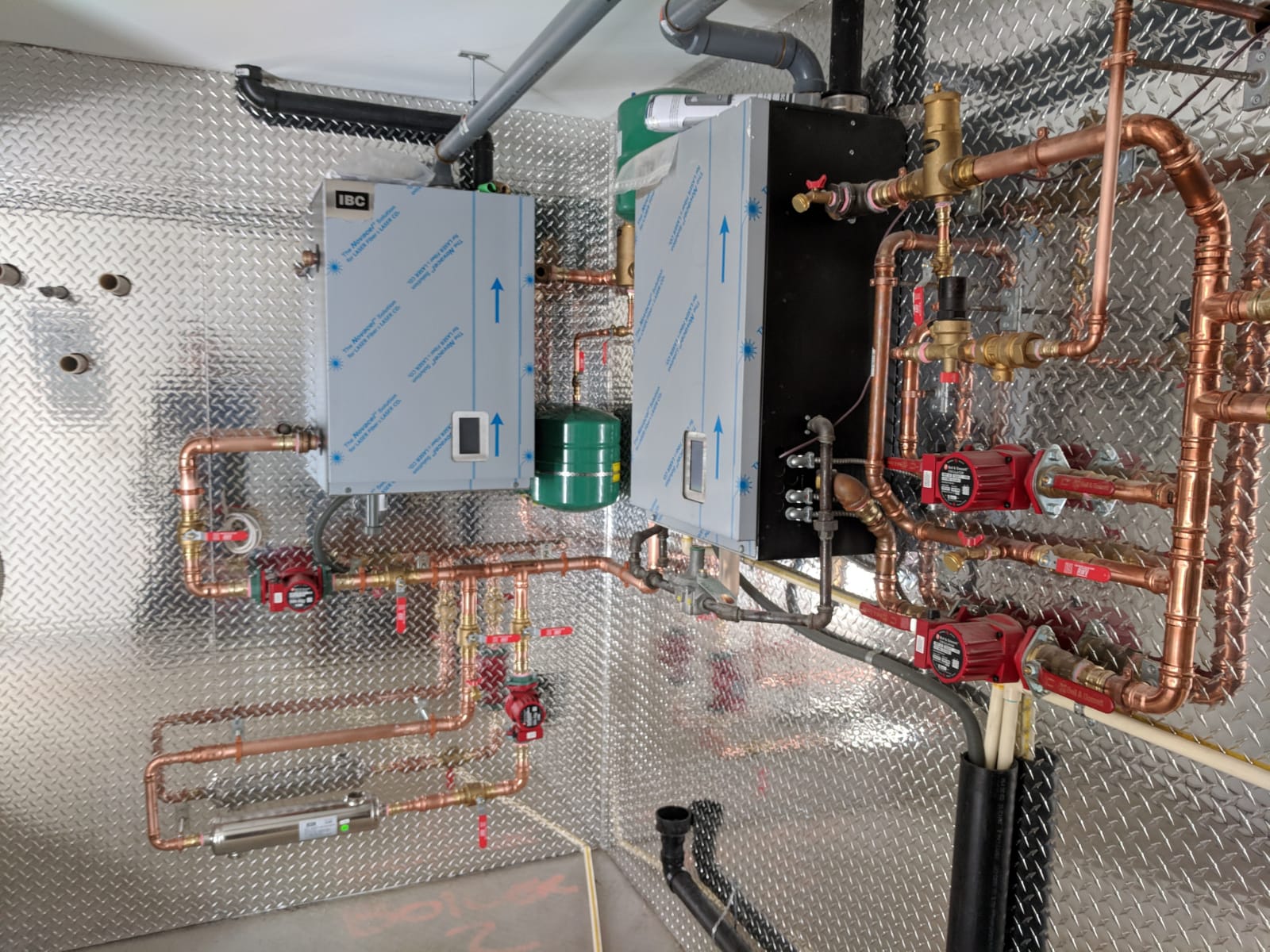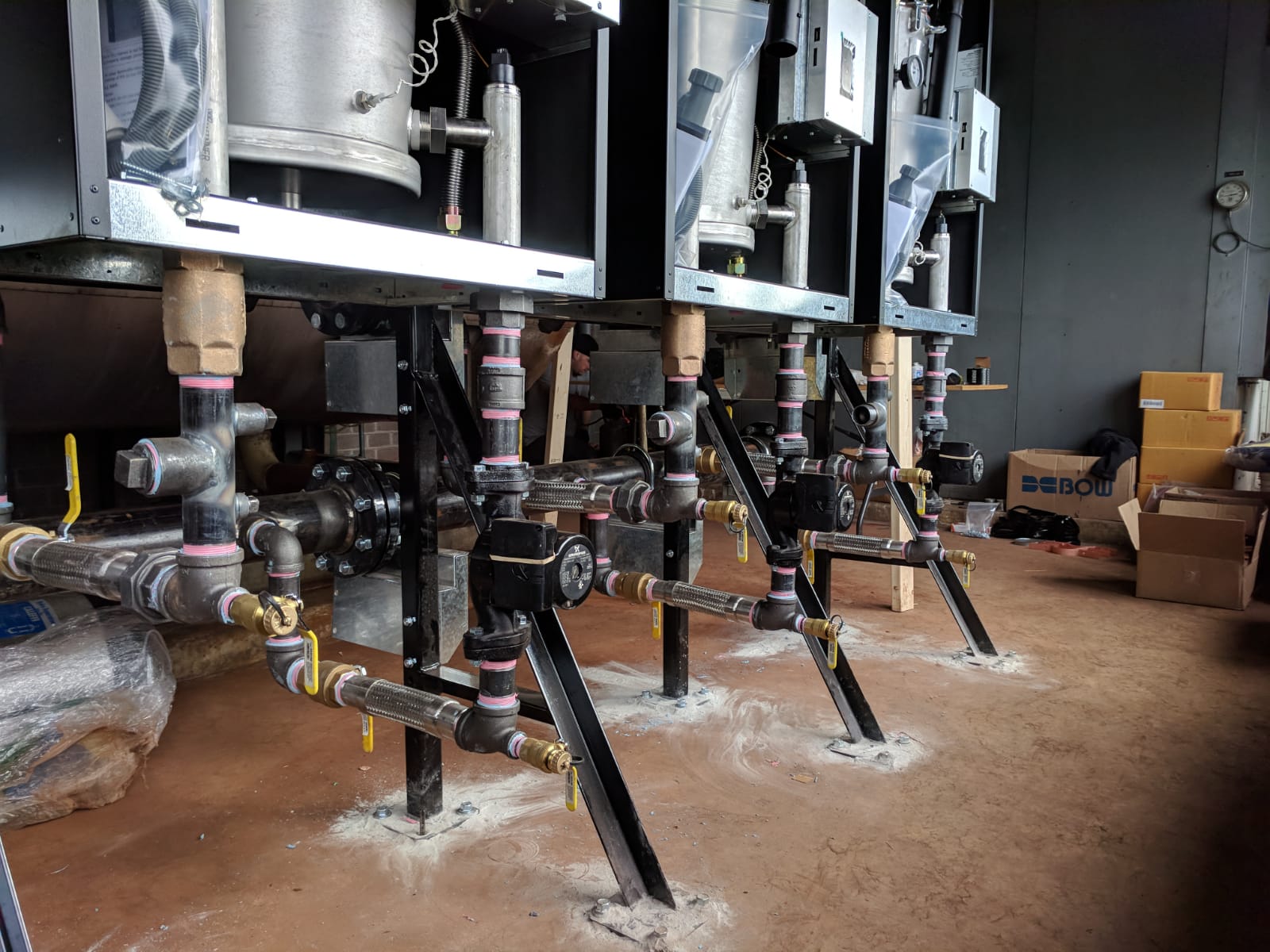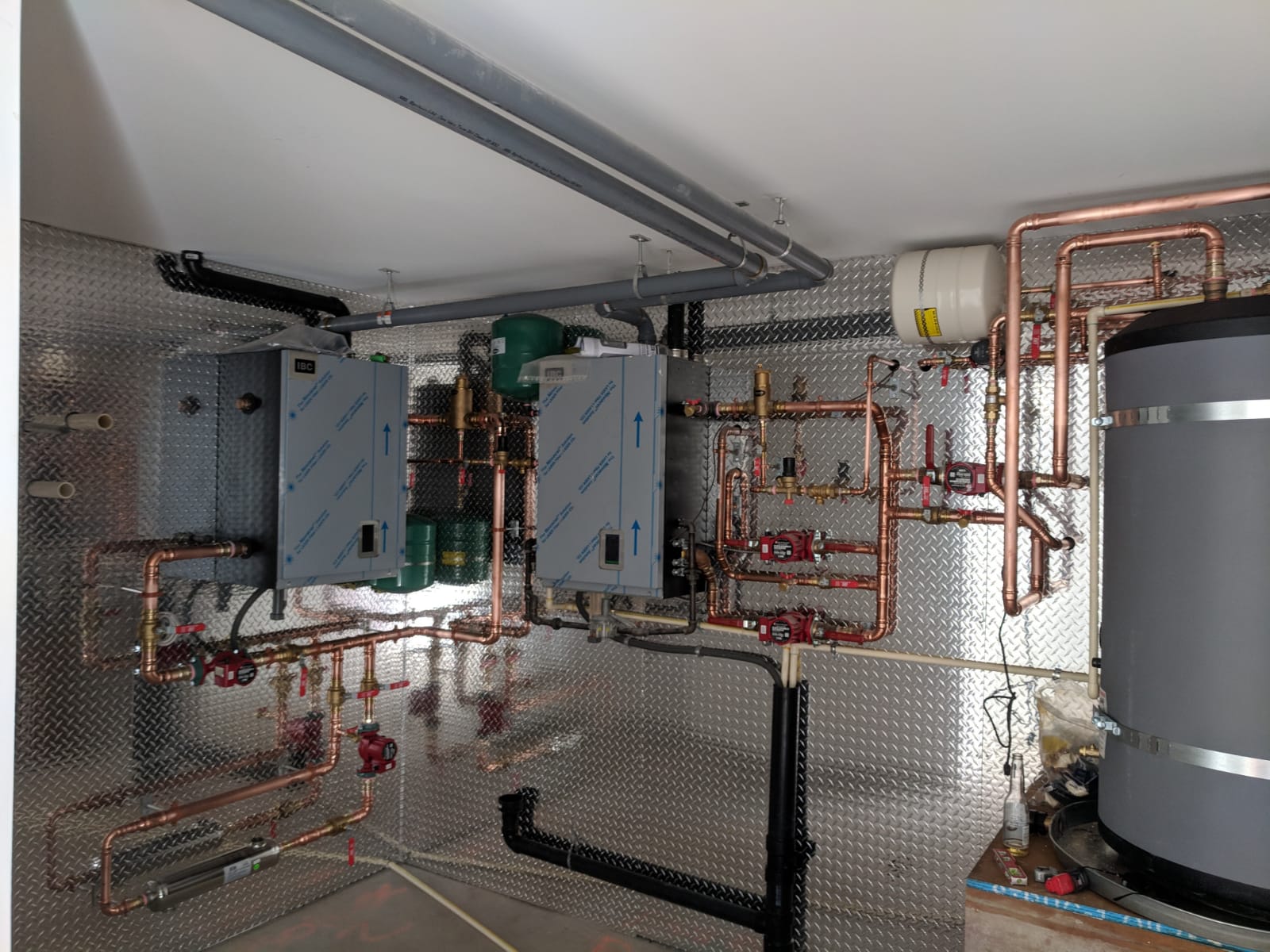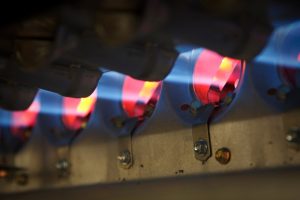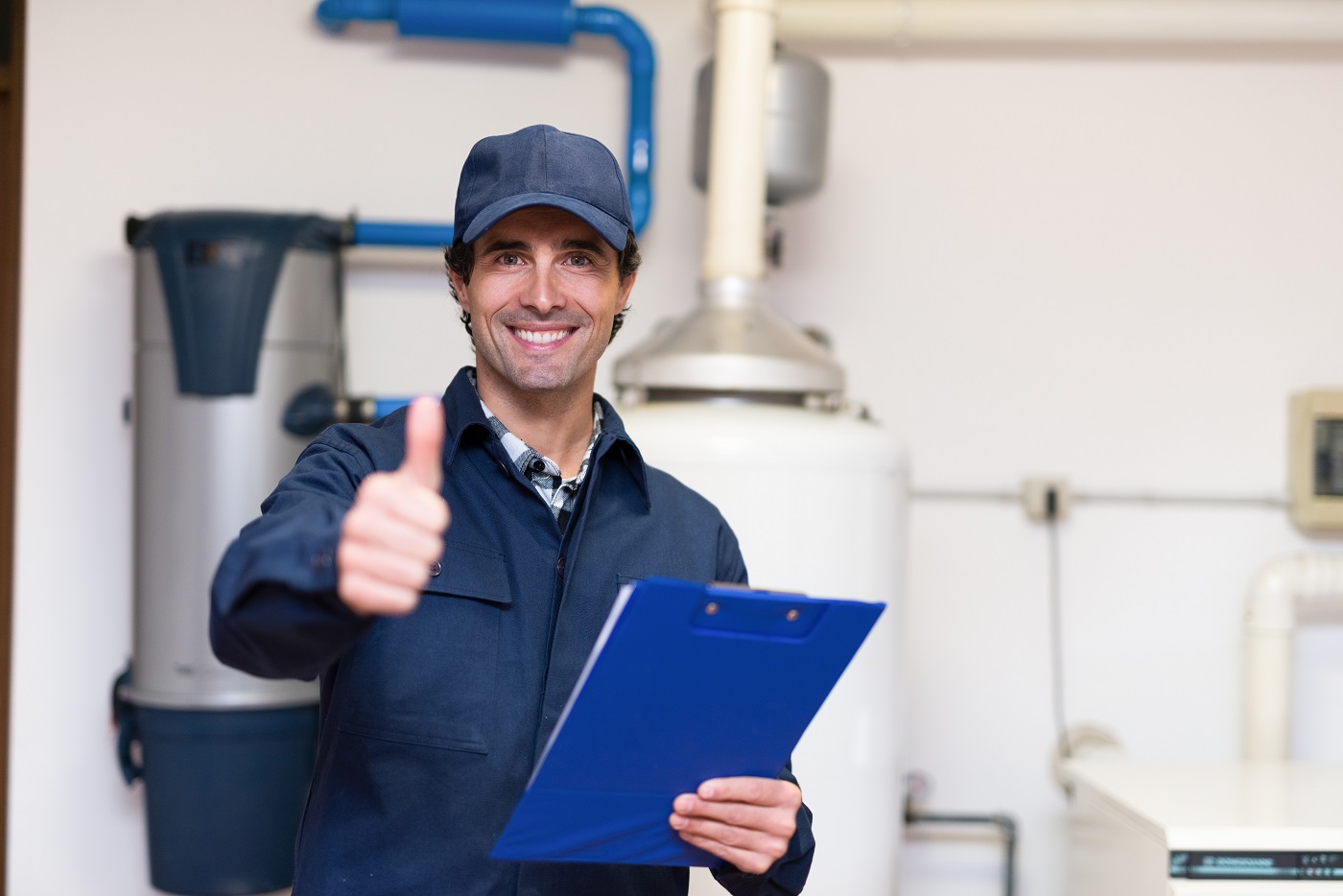Does Your Home Need Heater Replacement?
Does Your Home Need Heater Replacement?
Your heating in Vancouver plays an important role in the comfort of your home and your family—especially during the colder months of the year. Knowing when it’s time to replace your furnace or boiler can help you avoid costly heating repairs and keep your home at a desirable temperature. Keep reading for signs that your home needs heater replacement.
Your heater is too old.
Do you know how old your current heating unit is? The older it is, the more likely it is that you will benefit from replacing it with a newer model. Furnaces are designed to last around 18 years, though many start losing efficiency after 10 years. The same is true for boilers. If your home’s current furnace or boiler is nearing 10 years of age, now might be a good time to invest in a new model.
Your heating bills have been increasing.
When heating systems lose efficiency, they must work harder to keep the home at a designated temperature. This typically results in higher heating bills, even though your home isn’t any warmer than you normally have it during this time of year. A heating replacement professional can help you determine if a new furnace or boiler will help you reduce your heating bills.
You’re constantly calling for heater repair.
A heating repair company can help you maintain a comfortable and inviting home, but they shouldn’t be coming to see you too often. If you are calling for heater repair multiple times a year, then you can benefit from a new heater. Buying a new heater will end up costing less than scheduling repair after repair, and you’ll enjoy your home again.
Your thermostat isn’t working properly.
The thermostat is your connection to your home’s heating system. If it isn’t working properly, you won’t be able to make your home warmer when it gets cold outside. Having to adjust your thermostat constantly in order to get the temperature you want could mean there is something wrong with your heating system. Heater replacement can be the solution in this case, and it will allow you to have a reliable thermostat.
If you think it’s time for a new heating installation in Vancouver, our heating and cooling professionals can help you. We offer a variety of heating services, including duct cleaning, to help you keep your home running efficiently. Visit our website or read through our blog for more information.
Signs Your Water Heater Needs Help
Signs Your Water Heater Needs Help
Your water heater often sits out of sight and out of mind. However, it will display noticeable signs when attention is needed. Over time, several factors can affect the function of your water heater, causing it to lose efficiency and suffer a decline in overall performance. Spotting the signs that your water heater needs repairs means preventing further damage that could ultimately require its replacement. If your water heater’s performance has dropped, it’s time to call your water heater repair service in Vancouver to assess the cause of the problem you’re experiencing and solve it.
Your Hot Water Is Slow
All water heaters take some time to deliver hot water when you open the tap. However, an increase in the amount of time it takes to get hot water generally indicates a problem with your water heater’s heating elements, which may need to be repaired or replaced. Even if you’ve always had to wait a while for hot water, if you get the general feeling that you’ve been waiting longer than you remember, it’s a good idea to call in your plumber to inspect your water heater for factors that could be affecting its ability to heat and deliver hot water in a timely fashion.
Your Hot Water Isn’t Hot
There are several factors that can affect the heat of the water you receive from your tap, and your water heater’s state of repair is chief among them. If your hot water simply isn’t getting as hot as it once did, even when you first turn it on, this is a sign that there is a problem in your water heater’s heating system that needs repair. Tank water heaters with two heating elements typically have one element located at the top of the tank and one at the bottom. Water that never gets hot indicates that the top element needs repairs, while water that is hot initially but doesn’t last is usually a sign that the lower heating element is failing.
Your Hot Water Is Rusty
Rusty or dirty water is a sign of sediment buildup inside your plumbing system. If all your water—both hot and cold—is rusty, corrosion in your plumbing pipes is typically to blame. However, if you only notice rust or dirt in your hot water, it’s a sign of mineral buildup inside your water heater. This issue always needs prompt repairs, as continued buildup can lead to corrosion of the tank, which requires you to replace the entire water heater once it has begun leaking. Scheduling water heater repair as soon as you notice rust in your hot water is the best way to prolong the lifetime of your water heater and enjoy clean hot water once more.
Prompt water heater repair will improve your daily life and reduce the risk of water heater failure. If you need water heater repair in Vancouver, you can reach an experienced plumber on our website to schedule an appointment. We also invite you to scroll through our monthly blog, where you’ll find more general plumbing and HVAC tips to help you keep your home in top shape.
How to pick right size Water Heater?
You’re in the market for a new tank water heater. You either want to replace the aging water heater currently in your home, or you’re moving in a new home that doesn’t have a water heater yet. Whatever the case, you’ll have plenty of questions about buying a new water heater. A major one is how big the water heater needs to be. Too small, and your household won’t receive sufficient hot water. Too big, and you’ll have a massive energy wasting appliance on your hands.
You shouldn’t worry about making a choice. Properly sizing a tank water heater is something to leave to plumbing professionals. They’ll make the calculations to determine the size and type of water heater to meet your family’s hot water demands without draining your bank account.
How Professionals Size a Tank Water Heater
To find the right size of the water heater for a given household, installers need to know two important things. The first is the first-hour rating. You can probably guess what this means: how many gallons of hot water the tank can deliver over an hour starting with a full tank. This rating combines other important data, such as the tank capacity, the energy source used for heat, and the power of the heating source.
The other information the installed need to know is peak hour demand. This is how many gallons of water your household uses during the hour of the day when there’s the largest hot water demand. (Usually, this is in the morning.) When the installers know this, they match it to the first-hour rating of the water heater. A peak hour demand of 36 gallons means putting in a water heater with a first-hour rating of 34 to 38.
If you’re looking for installation of a new tank water heater in , Burnaby, Vancouver - Canada, you’ve found the right people. We not only install tank water heaters, but we also work with an excellent alternative, the tankless water heater.
How to Extend the Life of Your Furnace
The last thing you want is to come home, on a cold winter night, to find your 15 year old furnace on its deathbed. It’s every Canadian’s nightmare, and for good reason. Especially with the Farmers’ Almanac predicting a cold winter this year, you want to be prepared.
For most of us, we usually don’t pay attention to our heating and air conditioning systems until it’s too late. When your furnace inevitably breathes its last breath, you’ll be waiting for that emergency HVAC technician to arrive while you and your family are wearing jackets and toques around the house.
This is an experience nobody wants to repeat twice, and probably the reason you stopped by our blog. If you are concerned about your furnace lasting the upcoming winter, we want to equip you with the proper tools and the following 5 tips on how to extend the life of your furnace.
1. Install a Programmable Thermostat
Overworking your furnace is a great way to send your furnace to heaven early. Although you’re currently toasty warm, you’re diminishing your furnace’s longevity. Without implementing balance with your furnace usage, you’ll need to start booking the funeral.
But, we’re human. Sometimes we forget to turn it down or off. So, how do you create a balance with your furnace’s usage without human error? Introducing smart and programmable thermostats.

Installing a programmable thermostat controls the usage of your heating system. Basically, it allows you to set a predefined schedule that adjusts the temperature of your home based on time of day and season, turning the heat down at night and during the day when no one is around.
Smart thermostats add an additional level of control by reacting to movement (are people home or not), creating schedules on the fly, smart control via phone apps and additional tracking to allow you much better control of your system – from anywhere in the world. Not only are they useful for furnace longevity but these new thermostats will also save you money on energy costs.
2. Replace Air Filter
If your air filter looks like an old, dusty accordion, it’s past time to replace the filter. Often neglected, your air filter can drain the life out of your furnace if not replaced or cleaned. The air filter function is to clean the air and protect your system from allowing dirt and debris to enter the furnace.

When dirt begins to cover the filter, your furnace must work much harder to move air. Because dirt and dust are covering the filter, the furnace fan will need to work hard to overcome the additional resistance. Also, since less air is moving through the system, your furnace will need to run longer in order to raise the temperature.
3. Prevent Air Leaks
Air leaks rob you of the warm air your furnace works so hard to produce. Not only do air leaks drain your home of that warm air but it also pushes your furnace to work harder and longer, resulting in a reduction of its lifespan. Your front door, windows, walls, bathroom and kitchen vents, basement intrusions and any small gaps and spaces can allow air to infiltrate.
Preventing drafts and eliminating air leaks to ensure your home is properly sealed and insulated is one of the best things you can do to improve the comfort of your home as well as the life of your furnace.
A useful trick to determine if your door or window is causing an air leak is by lighting an incense stick and placing it in front of your inspecting area. If the smoke rises up, there’s no leak. If the smoke moves in a different direction, you have a leak. Most big box DIY stores have a whole section on weather stripping and caulking to help fill these gaps and stop leaks.
Cold basements: Is a lack of cold air ducting to blame?
The season has changed to fall, and in many corners of Canada the temperature is getting chilly in the evenings. As winter fast approaches (sigh), it’s time to make sure your home heating is in order. Many people struggle with cold basements, but why?
Chances are that your furnace has the capacity to heat your basement and the above-ground levels of your home. Lack of cold air return ducting is often the culprit. For any furnace to deliver warm air to a given room, the cool air that’s already there needs to get out of the way.
Unfortunately, cold air return ducts are often forgotten when basements are finished. To function properly, they need to draw air from the basement floor where it’s the coolest. This work is best done by a professional heating contractor.
If you need professional help making your basement cozy, make sure to hire the smart and safe way with a written contract or service order.
5 facts you need to know about heating your home
As Canadians, we rely on heating systems more than most nations in the world. But our need doesn’t necessarily translate into knowledge. If you’re unhappy with the comfort or cost of keeping your home warm in winter, here are some things to consider.
Insulation is key
While the kind of energy source and heating equipment you have can affect annual costs a lot, don’t even think about upgrading your system until you’ve optimized insulation levels in your home. For most places in Canada, 22 inches of batt or loose-fill insulation in the attic makes sense. This is more than many homes have, but it pays to go beyond the basics when it comes to insulation.
Choose natural gas if you can
Natural gas is abundant in Canada and also burns cleanly in furnaces and boilers that operate at efficiencies greater than 95 per cent. Although prices fluctuate, natural gas always averages out to be the cheapest and most stable source of energy for home heating.
Consider heat pump technology
If you don’t have access to natural gas where you live, electric heat pumps make sense because they offer the next most economical source of heat. For every dollar you spend on electricity for a heat pump, the system delivers $2 to $3 worth of heat, compared with electric baseboard resistance heaters. Most heat pumps can also operate in reverse, cooling your home in summer.
Explore smart controls
We’ve had programmable thermostats for a long time, but the electronics that control heating systems are advancing beyond these basics. Wireless thermostats, for example, make it easy to control the temperature of different rooms independently. Why heat a room you won’t be using at certain times of the day? Today’s best control systems also deliver temperature levels that are more stable and consistent than ever, especially with hot water heating systems.
Hydronic heating conversion
“Hydronic” is a fancy word used to describe hot water heating systems. Hot water radiators and infloor heating provide some of the nicest and most even heat you’ll experience. Since there are no fans involved, there’s no moving air to kick up dust. Hydronic heating is also one of the best options for converting from electric baseboard heaters to natural gas.
Regardless of what insulation or heating system changes you want to make to your home, be sure to hire a qualified contractor to do the work. Home heating systems are not DIY projects — you need an expert who knows all the safety requirements. Electrical and gas contractors need to be licensed, so never hire someone who isn’t.
Is Your Hot Water Tank Temperature Safe?
Many people are unsure of the correct temperature to set their hot water tank at and do not realize that the temperature of your hot water is an important factor in household safety.
There are a few things to keep in mind when thinking about hot water temperature in the home, particularly if your home’s occupants include young children, the elderly, or those with suppressed immune systems. It is important to take the appropriate safety precautions to ensure that your hot water system prevents disease and injury, so you can rest easy knowing that your home is safe for you and your family.
Water Temperature and Safety Risks
Household hot water needs to be stored at a high enough temperature to kill potentially disease-causing bacteria, particularly Legionella, which causes Legionnaires’ Disease. Legionnaires’ Disease is a respiratory infection that leads to pneumonia and can be harmful and even fatal in some instances.
60 degrees C is often the default factory setting on hot water tanks. 60 degrees C (140 degrees F) is hot enough to ensure that dangerous bacteria like Legionella cannot survive. However, this temperature can scald you and cause serious damage to the skin, particularly for young children and the elderly.
Some people recommend setting your tank to 49 degrees C (120 degrees F) to prevent scalding. 49 degrees C is hot enough to kill most harmful bacteria, but it does not guarantee getting rid of all of it.
How to Keep Your Hot Water Safe
Both injury from scalding and disease from bacteria are legitimate safety concerns, so it can be difficult to determine the best course of action when it comes to your hot water tank temperature. You can protect yourself from both harmful bacteria and scalding hot water with a system that stores water in the tank at a high enough temperature to eradicate bacteria while giving you cooler water at the tap to prevent scalding. There are a couple of different ways that you can do this.
One option is to install a hot water tank booster. This is a device that keeps the water in the tank at 60 degrees C, then mixes it with cold water as it leaves the hot water tank so that the water coming out of your taps will be about 49 degrees C—hot enough for all your household needs but not enough to scald.
The other option is to have anti-scald devices installed right at each tap. Anti-scald devices monitor the temperature of the water and ensure that water comes out of the tap at a comfortable 49 degrees C. Anti-scald devices also account for changes in water pressure, so even if you are showering while someone else in the household is using cold water elsewhere, the anti-scald device will change the hot water pressure accordingly so that you don’t have a sudden burst of very hot water pouring onto you unexpectedly. Some faucets and showerheads have anti-scald devices built right in.
3 Signs You Need Heating Repair
It’s starting to get really cold in Vancouver—is your heater up to the test? Unfortunately, you’re not going to be able to make it through every single winter without a little heating work. You shouldn’t shy away from the problems you’re facing in your home. If you need Vanmach Plumbing and Heating, you can schedule an appointment with the professionals on our team.
You can trust our team! We’ve been able to grow steadily throughout our decades in business because of our dedication to the comfort of our customers. We’re a family-run and locally-owned business. You’ll know that you’re getting the best work possible when you come to the members of our team.
Come to Us When…
It’s time to come to our professionals when you notice any of the following:
1. You Can’t Get Warm
Now we know that Boston winters aren’t a walk in the park, but you should always be able to remain warm in your home no matter what the temperatures are outdoors. Your heater in your home should be able to handle any heating and cooling imbalances and it should be able to bring your home to your desired temperature and keep it there for your desired amount of time. If this isn’t the case, it’s time for you to schedule an appointment with our team.
2. You’re Shelling Out Cash
Are you paying way too much for your home’s heating services? The price of your energy bills this winter should always reflect the way that you run your home’s heater. If you’re running your home’s heater at a moderate temperature for a reasonable amount of time, you shouldn’t be paying heating bills than drain your wallet. If this is the case in your home, it’s time for you to schedule an appointment with our service technicians. We’ll optimize your heater’s efficiency levels and ensure that you get the best service available to you.
3. You Have Low Indoor Air Quality
Do you have low indoor air quality in your home? Low indoor air quality might manifest as lots of coughing and sneezing when you’re at home, a difficulty getting warm, lots of dust and debris floating around your home, and dryness of your eyes, nose, throat, and skin. You don’t have to brush these issues to the side just because they seem like something you can deal with. You shouldn’t have to “deal with” anything in your home—you should have the best comfort available to you.
Professional Service Counts
You’re going to need professional service when you want heating repair. We know that it’s tempting to want to talk to an amateur or turn to the Internet to try to DIY your problems away. It’s time for you to schedule an appointment with our professionals. We have the right licensure, experience, and expertise to get your home warm for winter.
The Top Common Plumbing Problems
Pretty much, every homeowner has a couple of basic instruments that can help in fixing minor pipe issues. If you are having a clogged toilet or slow drain, it may just need some real effort and a plunger to make it function as before. However, if the problem persists, you are always welcome to Vanmach Plumbing and Heating office.
Plumbing Maintenance
One of the best ways in avoiding expensive plumbing repairs is by having a normal up keeping plan. A careful and regular assessment of your home can help spot and allow you to fix potential issues before they develop further.
Concealed holes in the sink channels or underneath water heaters are something that you need to carefully take into account as after some time, they can cause damage. Water that saturates sheetrock or mortar will add to the development of mould. Permeable tile or wood ground surface can also stain when wet.
Routine DIY Maintenance Tasks
If you want to avoid some costly repairs, it’s always advisable to maintain a regular schedule of your maintenance routine. You may use your sinks and tubs almost every day, yet you probably won't see minor issues except if you put aside time for an investigation. Do take time to check your home and investigate your pipes. Look at all uncovered funnels, including under sinks and behind can tanks, for any indications of dampness.
Turn on water fixtures in sinks, showers and tubs so that you can be able to see the water pressure. Every one of them ought to have a consistent stream. Note how rapidly the water depletes after you test the faucet. While you're investigating for potential issues, flush the toilet to guarantee that it doesn’t run at the base, which is an indication of a broken wax seal.
Get in touch with the Vanmach Plumbing and Heating.
Proficient Inspections
Examinations from an affirmed plumber will give you an additional view of your home's pipes and drains. The inspector will check the water heater, garbage disposal and every area of your home’s plumbing system.
Dribbling Faucets
It can be very irritating when the dripping sound from the kitchen doesn’t stop throughout the night when you are trying to rest.
Not all sinks have washers to keep down the stream of water. Ceramic taps, likewise called disc or canister taps, use strong plates that fit together to shape a seal.
Low Water Pressure
If the water is not flowing naturally and at a good and steady pace, then this is an indication of low water pressure. It is often due to your water supplier to fix this issue. It is rarely an issue with the water pipes at your home.
Running Toilet
If you have a running toilet, this can cause all sort of issues. One of the biggest is that it will significantly impact your water bill due to water wastage. The issue with toilets can happen because of many reasons, therefore, it is important to call emergency plumbers near me to fix this issue immediately.
DIY Versus Professional Plumbing : Things to Consider
In this ongoing DIY age, almost every house-owner or renter has some essential tools within reach to tackle minor plumbing issues. A slow drain or a clogged toilet often requires a plunger or an elbow grease to start functioning smoothly again. Even routine tasks like replacing a worn out drain cover or washer are quite simple and easy enough to call a professional plumber.
According to qualified 24 hour plumbers in london, staying up to date with regular maintenance schedules is a smart approach to cut down the costly plumbing repairs.Thorough inspections carried out at routine intervals are the key to identify small issues before they become severe.
Routine DIY tasks for plumbing maintenance
- You have to set aside a little time to carry out the routine inspections. Go through your home carefully and inspect the exposed plumbing network for any sign of leaks or moisture. These leaks are common at places like underneath a sink, the exposed pipes and behind the toilet tank. Check out if there’s any sign of corrosion on the copper or brass fittings. Damp metals are more prone to corrosion and corroding metals give way to leaks easily.
- To check out the water pressure, turn the water faucets in showers, tubs and sinks. A little variation in pressure is normal between the various water outlets but all of them should have a steady water flow.
- After testing the faucets, it is time to check out how fast water drains away. According to experienced emergency plumbing repair experts associated with Vanmach Plumbing and Heating, slow drain usually indicates a clog.
- While you are inspecting, be sure to flush the toilets to see whether they leak at the base. If they do then you’ve the issue of faulty wax seal.
Professional plumbing inspection
Professional plumbers, on the other hand, provide a more in-depth inspection of your drains, pipes and plumbing fittings. They also cover the water heater and garbage disposal. To cover every part of a plumbing network, trained plumbers use remote cameras and video cameras to detect leaks and faults.
Sediment buildup inside the pipes is known to slow down the water flow. Licensed plumbers quote hefty prices for their services but at the same time they provide a higher value for your hard-earned money. Licensed 24 hour plumbers in Vancouver possess the necessary equipment to perform pressure test to detect hairline leaks.
DIY plumbing may be the present trend but there are certain cases which must be resolved by a trained professional. These areas include:
- Installation of new pipes, tubs or sinks.
- Issues with the water heater.
- Leaks in the septic tank or the sewer line.
Remember these words of caution and your DIY will never fail.

